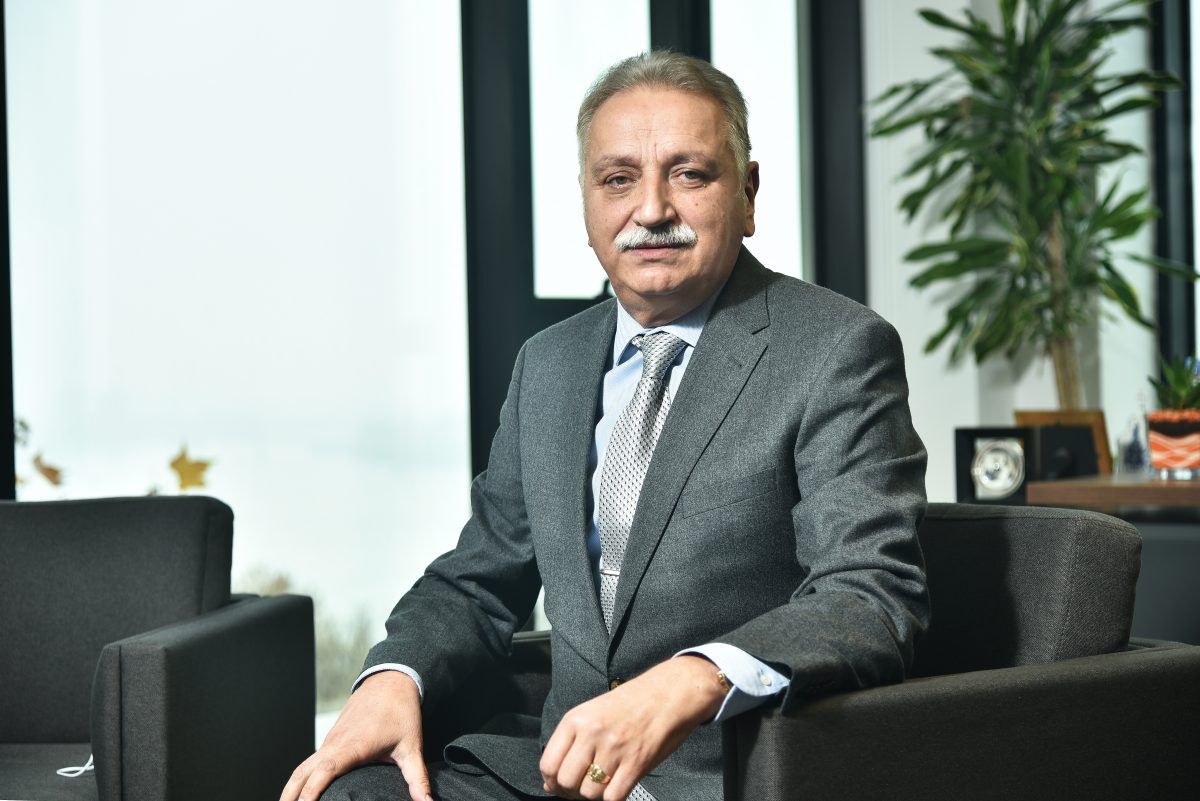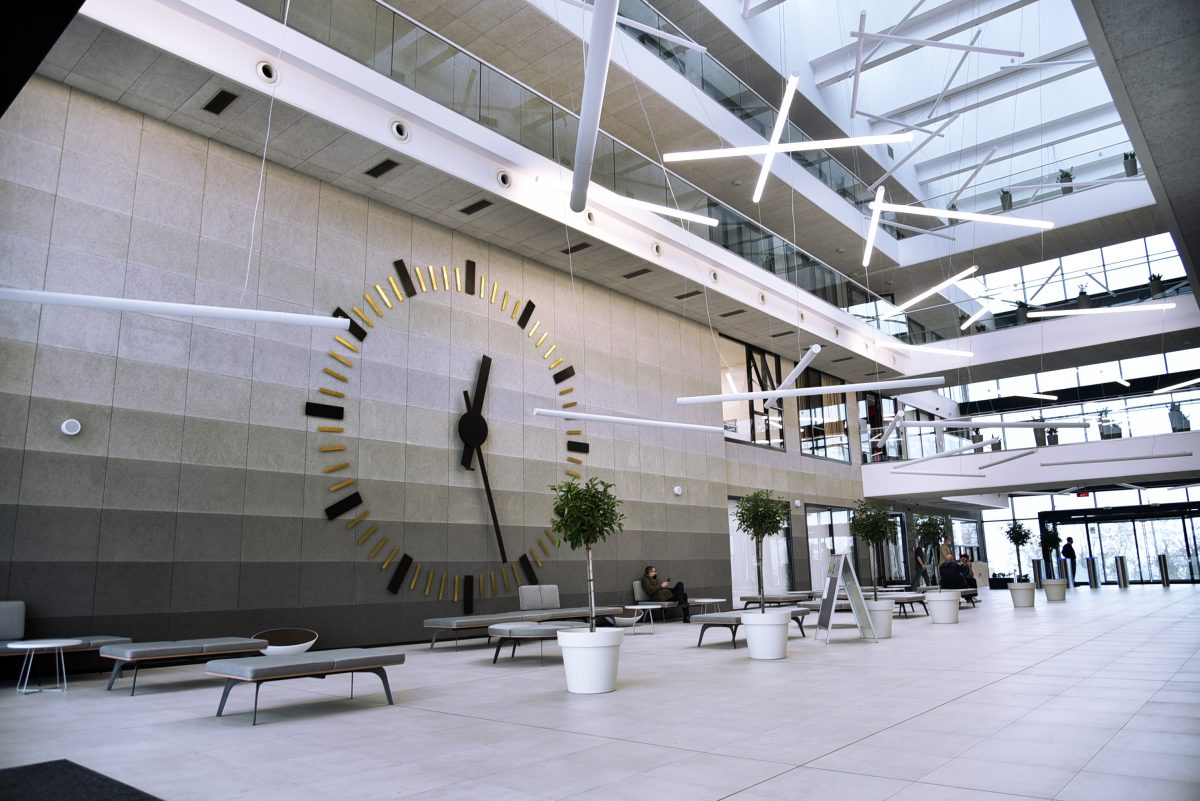The new RTV building, in which 1,500 people will work, spans 17,350 square metres and will broadcast in Serbian and 15 national minority languages
Vojvodina’s public broadcasting service has a new home – the RTV employees will soon move into a new building which cost 3.2 billion dinars to build. The money was provided by the Government of the Republic of Serbia and the Provincial Government, as was one of the joint infrastructure projects in the Autonomous Province of Vojvodina.
We have talked to the Director-General of the RTV, Dr Miodrag Koprivica, about moving into the new building, how it will improve the quality of work, the digitization of the archives, how is the RTV going to adapt to new digital habits and what is the future of the RTV.

Dr Miodrag Koprivica, Director-General of Radio and Television of Vojvodina
To what extent and in what way will the new building affect the quality of work of the Radio-Television of Vojvodina?
As everyone knows, the Radio and Television of Vojvodina has been operating in an inadequate space since 1999, at improvised studios at four locations. In the last three years, we have managed to erect a new building spanning just over 17,000 square metres, which was designed to fit all the needs that a TV station like ours have and need to fulfil its mission. We hope that the new technology that we have installed here will improve the quality of our programme that we broadcast in Serbian and 14 other minority languages and that it will be more diverse and more popular with the viewers.
Do you have any plans to digitize the RTV archives?
A plan to protect the archive certainly exists. In the past, we have let certain archive pieces get lost or ruined, either for objective reasons such as bombing or subjective ones such as lack of space to store archive material. We now finally have appropriate conditions to store it adequately. Besides the new building, we have preserved 4,000 square metres of basement space in one of the three buildings of the old complex, and we are going to use this space to store the archive and everything that is not needed daily. This will cost an estimated one million euros and we intend to finish it by the end of 2021.
“The work on the construction of the new RTV building began in August 2017 with the demolition and removal of 26,879 cubic metres of the remains of the building demolished during the 1999 NATO bombing”
You have a wealth of experience in both the media and the business world. What do you think of the effects of the pandemic on various industries, the media and trade fairs in particular?
I think that the service industry as a whole has been affected by the pandemic, not just the trade fair sector and the media in particular. In the book about the Novi Sad Fair, that I wrote about ten years ago, there is a part about virtual fairs at the very end. Now, we are in a situation that we are forced to focus on only such a production of trade fairs. As far as the media is concerned, our programme depends on the wealth of content in our surroundings and real life, and if there are no events we can report about, we have to adapt. Among other things, we conduct education in minority languages, record school classes and put ourselves at the society’s service. We provide daily information and we must report about the anti-coronavirus measures daily. To conclude, the pandemic has certainly hit the media industry hard, but the formats are changing and adapting to current opportunities and needs.
Besides, we must protect our people, who are at risk in this situation, and that is why we have introduced volunteering. In addition to constant attempts to protect our employees, we want to better inform the viewers about the pandemic through our programmes.

Your scientific paper is titled “Multiethnic character of the public media institution of Radio and Television of Vojvodina as a public media service and its contribution to the EU integration”. What is the future of the Radio and Television of Vojvodina as a public broadcaster that is the leader in this part of Europe in terms of the number of languages in which it broadcasts?
Our idea is for Radio and Television of Vojvodina to become an information hub in the Danube region. This may sound pretentious, but if we are producing in 8 languages of the Danube region, then we must make an effort to use the advantage we have and thus avoid the provincialization of Radio andTelevision of Vojvodina. We want to properly utilize the fact that the state gave 45 million euro for the new building. We have to justify the trust and money that we have been given through the quality of our programming because it is obvious that there is a need for people to be informed and for a public broadcasting service that is unique in terms of producing programmes in minority languages. There is no cultural event in Vojvodina without us reporting about it and documenting it.
The fact remains that new generations are increasingly migrating to digital platforms. What is Radio and Television of Vojvodina doing, in addition to having an up-to-date website, to adapt to the habits of so-called “digital natives”?
We cannot boast that we have done a lot on that issue so far. Of course, we are aware that this type of television and radio information will experience a destiny similar to that of newspapers, and we are aware that we must adapt. We will soon launch a new Danube online portal, which is not commercial. This entails signing a contract with the media from the Danube countries which can offer a television or radio content and are willing to give up on the copyright for 6 months on the content which production was financed by a foreign foundation or institution so we can broadcast it in other Danube countries via our portal. The online portal will be available in Serbian and English, and we plan to make it available in all languages of the Danube countries. We need to adapt faster and make that kind of U-turn to focus on social media and new technologies to survive. Our correspondent network numbers close to 60 people, covering all languages, and we are constantly trying to improve the network of our reporters and cover as much of Vojvodina as possible by partnering with other TV stations and parts of Serbia. We have 7 platforms and broadcast 24 hours a day. I think that is the advantage of Radio and Television of Vojvodina.
You are one of this year’s recipients of the Captain Miša Anastasijević Award. How much does such recognition mean to you personally and professionally?
Any recognition is pleasing to a person, especially when it comes to the professional ones. However, there is also the opinion that awards can damage a person, both internally and externally. A person does their job in accordance with their moral and other principles and the possibilities, both personal and those that their surroundings allow. It is up to the person’s surroundings to recognize that work. Since I am a team player, I think that every recognition belongs to the company I work for too, as well as to the people I work with.